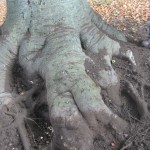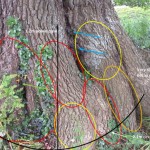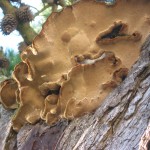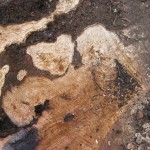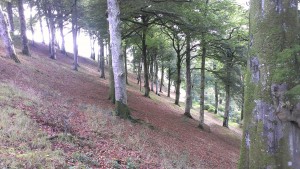Tree Survey, Inventory And Condition Assessments
DPTC is experienced in providing tree surveys that save clients time and money by offering direct and honest advice.
Jump to page content:
-
Tree Surveys for Planning applications.
-
Tree Surveys for property sale or purchase, or for mortgage purposes.
-
Tree Condition Survey.
-
Detailed Tree Condition Assessment for individual trees.
-
Scoping surveys for mapping large tree populations and their management.
-
Tree and Woodland Condition Surveys.
-
Tree Risk Management.
Tree Surveys for Planning applications
Tree Surveys for property sale or purchase, or for mortgage purposes
During property sale or purchase it is often useful to facilitate the contract by having a Tree Survey undertaken. This could be requested by either the vendor or purchaser, or the lender as part of a mortgage agreement. Typically, tree surveys are carried out where existing trees have been highlighted with the potential to cause damage to property. The tree survey and report may also identify potential problems which could occur in the future. The report will not only address any tree-related problems caused to the property, but will also highlight any potential safety liabilities.
Top ↑
Tree Condition Survey
A tree condition survey is based upon the needs of the client as identified during initial discussions. The tree condition survey is often a basic tree inventory to record trees on a plan, with reference number and attached tag if required. Tree conditions will be assessed and if necessary recommendations made with a level of priority assigned. The report may also highlight management issues which may arise in the short, medium or long term. Additional considerations can also be added to suit your needs.
Top ↑
Detailed Tree Condition Assessment for individual trees
An increasingly more common instruction is to undertake detailed condition assessments for large, old trees valued by their owners, who are also aware that their trees have higher than average risk as a consequence of tree condition and people or property within falling distance. DPTC has many years experience of detailed investigations, and can make appropriate recommendations, such as risk management.
Scoping surveys for mapping large tree populations and their management
These are more basic tree surveys carried out to help plan and budget larger projects. These tree surveys may include site mapping, tree count, species identification and tagging and numbering trees where required. They may be carried out on a single large site or across multiple small or large sites. They are typically of use to organisations like housing associations and local authorities.
Tree and Woodland Condition Surveys
For the interested tree or woodland owner, we are qualified and experienced to advise them of the general health and condition of their trees and provide them with priority actions lists, management plans, and general advice concerning their tree stock, in the form of informal verbal advice or written report.
Tree Risk Management
Doug Pratt Tree Consultancy provides clients with tree inventory and condition surveys for the purposes of tree management and risk control, helping estate managers and tree owners demonstrate a duty of care towards people and property, minimising litigation and liability.
By focusing on risk as well as the condition of the tree, resources can be more accurately targeted saving time, money and stress for the estate manager or domestic tree owner. By issuing for the client’s use an electronic format (or hard copy) report with tree location plan and tree data table, the client is provided with documented evidence that they have met their duty of care with a reasonable and proportionate approach towards managing the risk arising from their trees.


